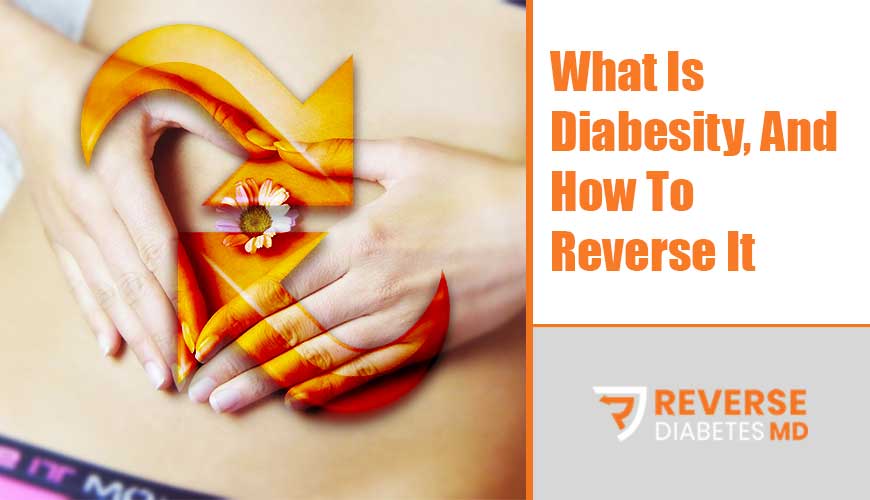If you are like most people, you are probably thinking that I have confused diabetes for diabesity, or you are probably wondering whether I intended to say obesity. You are not so far away from the truth as diabesity is a modern disease that links obesity with type 2 diabetes. Diabesity should be a concern for people with normal blood sugars who may be accustomed to unhealthy eating and lifestyle patterns. It is unfortunate that much is not mentioned about diabesity, which can predispose you to severe obesity, diabetes, and other fatal chronic conditions.
What Is Diabesity?
Diabesity is a sequence of events that starts with optimal blood sugar balance, to progressive insulin resistance, to being overweight, then becoming obese, and finally to full-blown Type-2 Diabetes. It comes in a spectrum that includes elevated blood sugar, elevated blood pressure, high cholesterol, and other health complications. These problems stem from diet, lifestyle, and environmental toxins interacting with our unique genetic susceptibilities. A study published in NCBI in 2013 concluded that “(diabesity) makes a strong call for utilizing indigenous, low-cost means of enhancing healthy dietary and physical activity habits.” Diabesity can also be described as the coexistence of obesity and type 2 diabetes.
What Are The Triggers For Diabesity?
Diabesity occurs following the development of insulin resistance and obesity. When your diet is full of empty calories: quickly absorbed sugars, liquid calories (soda, juice, sports drinks), and refined carbohydrates, you are likely to develop a resistance to insulin. Insulin (produced by beta cells in the pancreas) is the hormone that is responsible for grabbing glucose out of the bloodstream and storing it in cells. This ensures that blood sugar remains even in the blood. When the body starts ignoring the signal sent out by insulin, we call this insulin resistance. A high insulin level is one of the first signs because beta cells will keep releasing more and more insulin to try to remedy the situation. Unfortunately, the higher your insulin levels are, the worse your insulin resistance becomes. High insulin levels will also cause a spike in appetite which leads to overeating. Very soon, you develop weight gain around the belly, more inflammation and oxidative stress, and other effects such as high blood pressure, high cholesterol, low HDL, atherosclerosis, and increased risk of cancer, Alzheimer’s, and depression.
It is important t note here that the root cause of the problem is insulin resistance and not elevated blood sugar. Fortunately, insulin resistance can be reversed since it is strongly linked to a poor diet and an unhealthy lifestyle.
Most people can save themselves from diabesity by eliminating the factors that send their biology out of balance and replacing them with what’s needed to help the body re-balance itself.
Diabesity and Genetics
Many people believe that insulin resistance and diabesity are genetic conditions that cannot be extraneously controlled. True enough, our genetic predisposition plays a role in how we choose what to eat and how to live. It also plays a role in the development of insulin resistance. However, insulin resistance and diabesity are greatly influenced by diet and lifestyle. By controlling these factors, you can greatly minimize your chances of developing the conditions.
How To Reverse Diabesity
Before reversing diabesity, there are a few things you can do to keep safe. They include:
- Know the signs of insulin resistance.
One of the first tell-tale signs of insulin resistance is uncontrollable weight gain. You might also experience increased blood pressure and skin discoloration (acanthosis nigricans) on rare occasions. Unfortunately, insulin resistance may go unnoticed for years. Hence, you may be better off having some tests done.
- Get the right tests done
You should get tested if you have a positive family history of type 2 diabetes and are affected by a poor diet as well as a sedentary lifestyle. An insulin response test is the best test to tease out the condition.
If you have already been diagnosed with diabesity, here are three things you can do to start your reversal journey.
Make healthy diet choices
This may involve the input of your physician, nutritionist/ dietician, and yourself to come up with the right meal plan. A healthy diet will start with the elimination of sugary and processed foods. Opt for wholesome grains, fresh vegetables and fruits, nuts, white meat, and unsaturated fats. You can read more about this type of diet here. (hyperlink to foods that improve insulin sensitivity).
Get adequate rest
Stress is a major contributor to insulin resistance and blood sugar imbalance. Stress also contributes to making unhealthy food choices and overeating. You need to make a conscious effort to distress frequently by:
- Sleeping for at least 7 hours daily
- Practicing relaxation techniques such as yoga
- Taking breaks in between work, like every two hours
- Taking sabbaticals and vacationing periodically
Quit a sedentary lifestyle
Modern jobs involve sitting at an office desk and hitting the keypad for hours on end. In a world where work is compensated by the hour, it can be difficult to make time for exercise. However, when you consider the negative long-term effects of a sedentary lifestyle, you will be forced to reconsider the value of the extra money. What is the point if it’s going to cost your health in the long run? Quitting a sedentary lifestyle involves making deliberate choices about exercise and fitness. This may mean walking at least 30 minutes every day or engaging in more vigorous aerobic exercise 4-6 times a week.
References
1. Science Daily (2012): Genetic variants are linked to obesity and insulin resistance. Retrieved from https://www.sciencedaily.com/releases/2012/06/120626151107.htm
2. NCBI (2011): Is fast food addictive? Retrieved from https://www.ncbi.nlm.nih.gov/pubmed/21999689
3. NCBI (2013): Diabesity. Retrieved from https://www.ncbi.nlm.nih.gov/pubmed/23905459
4. NCBI (2008): High-fat diets cause insulin resistance despite an increase in muscle mitochondria. Retrieved from https://www.ncbi.nlm.nih.gov/pmc/articles/PMC2409421/






